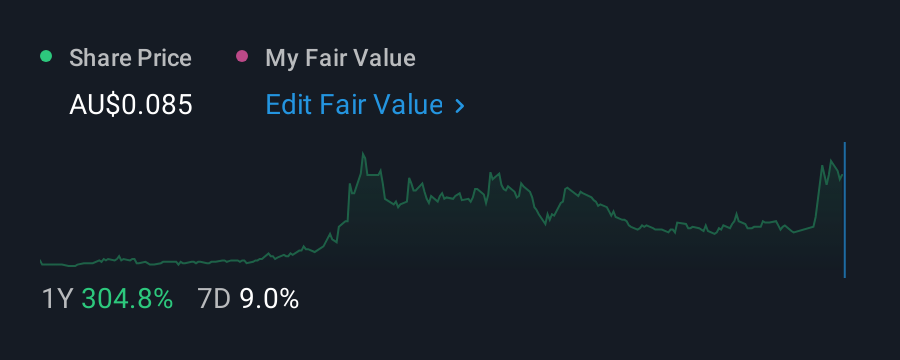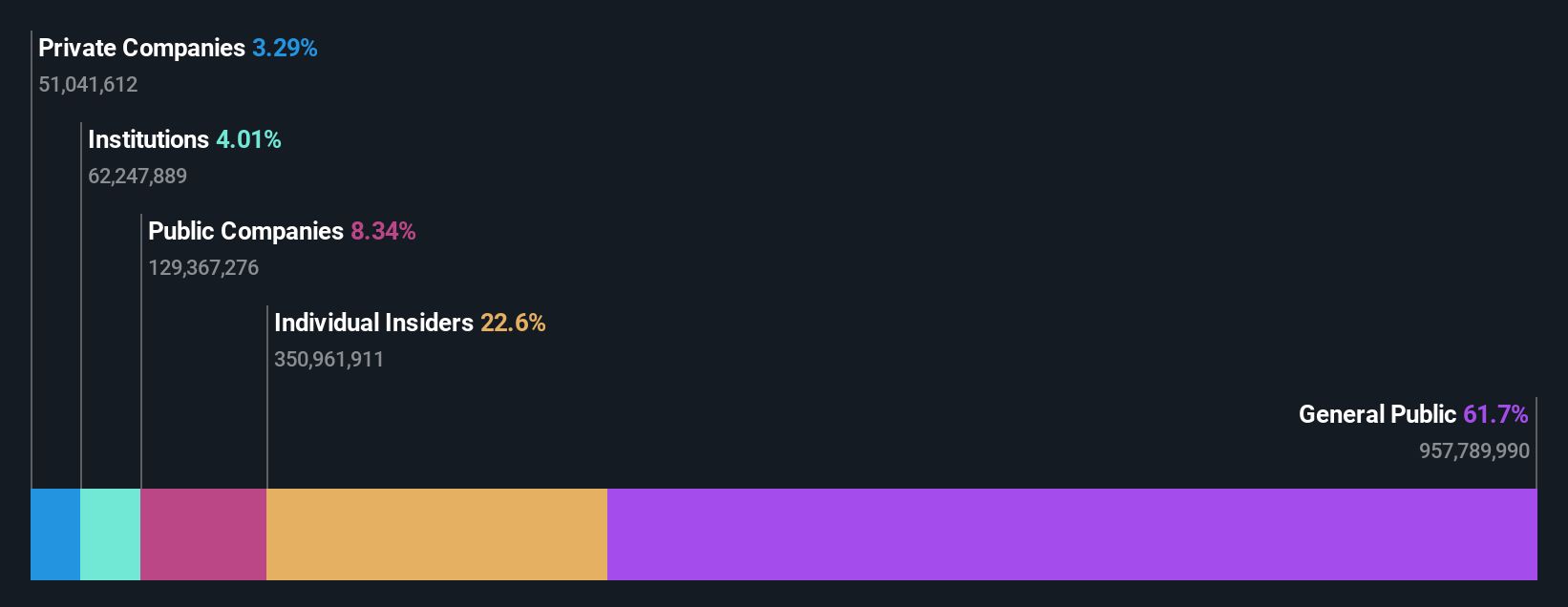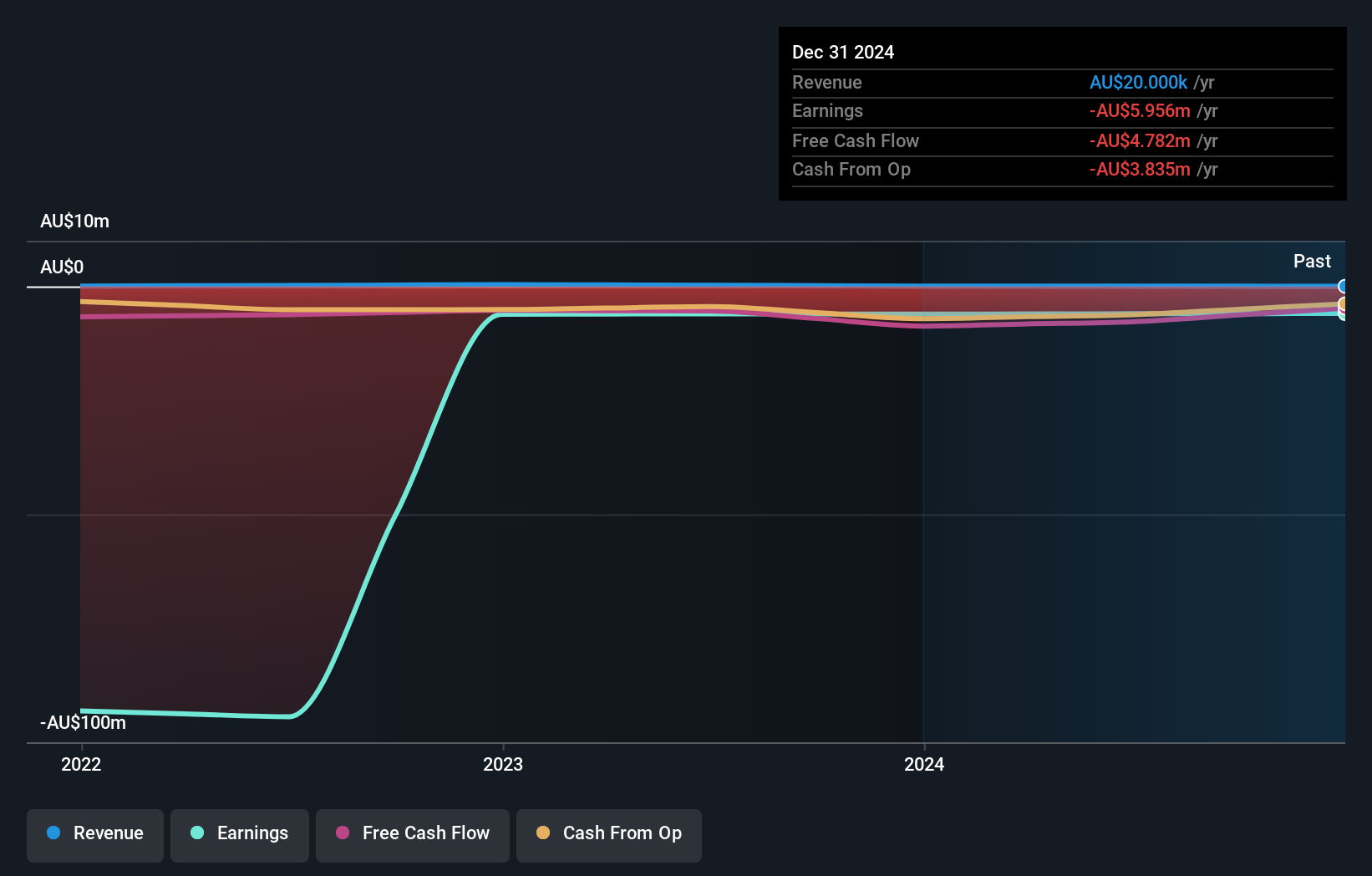- Australia
- /
- Metals and Mining
- /
- ASX:ETM
Energy Transition Minerals Ltd's (ASX:ETM) market cap up AU$85m last week, benefiting both individual investors who own 54% as well as insiders

Key Insights
- The considerable ownership by individual investors in Energy Transition Minerals indicates that they collectively have a greater say in management and business strategy
- A total of 16 investors have a majority stake in the company with 38% ownership
- Insiders own 20% of Energy Transition Minerals
To get a sense of who is truly in control of Energy Transition Minerals Ltd (ASX:ETM), it is important to understand the ownership structure of the business. The group holding the most number of shares in the company, around 54% to be precise, is individual investors. Put another way, the group faces the maximum upside potential (or downside risk).
While individual investors were the group that reaped the most benefits after last week’s 73% price gain, insiders also received a 20% cut.
In the chart below, we zoom in on the different ownership groups of Energy Transition Minerals.
Check out our latest analysis for Energy Transition Minerals

What Does The Institutional Ownership Tell Us About Energy Transition Minerals?
Many institutions measure their performance against an index that approximates the local market. So they usually pay more attention to companies that are included in major indices.
Since institutions own only a small portion of Energy Transition Minerals, many may not have spent much time considering the stock. But it's clear that some have; and they liked it enough to buy in. If the business gets stronger from here, we could see a situation where more institutions are keen to buy. We sometimes see a rising share price when a few big institutions want to buy a certain stock at the same time. The history of earnings and revenue, which you can see below, could be helpful in considering if more institutional investors will want the stock. Of course, there are plenty of other factors to consider, too.

Energy Transition Minerals is not owned by hedge funds. Our data shows that Chunlin Ouyang is the largest shareholder with 20% of shares outstanding. In comparison, the second and third largest shareholders hold about 8.3% and 2.8% of the stock.
Our studies suggest that the top 16 shareholders collectively control less than half of the company's shares, meaning that the company's shares are widely disseminated and there is no dominant shareholder.
Researching institutional ownership is a good way to gauge and filter a stock's expected performance. The same can be achieved by studying analyst sentiments. Our information suggests that there isn't any analyst coverage of the stock, so it is probably little known.
Insider Ownership Of Energy Transition Minerals
The definition of company insiders can be subjective and does vary between jurisdictions. Our data reflects individual insiders, capturing board members at the very least. The company management answer to the board and the latter should represent the interests of shareholders. Notably, sometimes top-level managers are on the board themselves.
I generally consider insider ownership to be a good thing. However, on some occasions it makes it more difficult for other shareholders to hold the board accountable for decisions.
It seems insiders own a significant proportion of Energy Transition Minerals Ltd. Insiders have a AU$33m stake in this AU$170m business. We would say this shows alignment with shareholders, but it is worth noting that the company is still quite small; some insiders may have founded the business. You can click here to see if those insiders have been buying or selling.
General Public Ownership
The general public -- including retail investors -- own 54% of Energy Transition Minerals. With this amount of ownership, retail investors can collectively play a role in decisions that affect shareholder returns, such as dividend policies and the appointment of directors. They can also exercise the power to vote on acquisitions or mergers that may not improve profitability.
Public Company Ownership
It appears to us that public companies own 7.2% of Energy Transition Minerals. We can't be certain but it is quite possible this is a strategic stake. The businesses may be similar, or work together.
Next Steps:
While it is well worth considering the different groups that own a company, there are other factors that are even more important. To that end, you should learn about the 3 warning signs we've spotted with Energy Transition Minerals (including 2 which don't sit too well with us) .
Of course, you might find a fantastic investment by looking elsewhere. So take a peek at this free list of interesting companies.
NB: Figures in this article are calculated using data from the last twelve months, which refer to the 12-month period ending on the last date of the month the financial statement is dated. This may not be consistent with full year annual report figures.
Valuation is complex, but we're here to simplify it.
Discover if Energy Transition Minerals might be undervalued or overvalued with our detailed analysis, featuring fair value estimates, potential risks, dividends, insider trades, and its financial condition.
Access Free AnalysisHave feedback on this article? Concerned about the content? Get in touch with us directly. Alternatively, email editorial-team (at) simplywallst.com.
This article by Simply Wall St is general in nature. We provide commentary based on historical data and analyst forecasts only using an unbiased methodology and our articles are not intended to be financial advice. It does not constitute a recommendation to buy or sell any stock, and does not take account of your objectives, or your financial situation. We aim to bring you long-term focused analysis driven by fundamental data. Note that our analysis may not factor in the latest price-sensitive company announcements or qualitative material. Simply Wall St has no position in any stocks mentioned.
About ASX:ETM
Energy Transition Minerals
Energy Transition Minerals Ltd involves in the mineral exploration and evaluation activities in Australia.
Flawless balance sheet with low risk.
Similar Companies
Market Insights
Community Narratives




